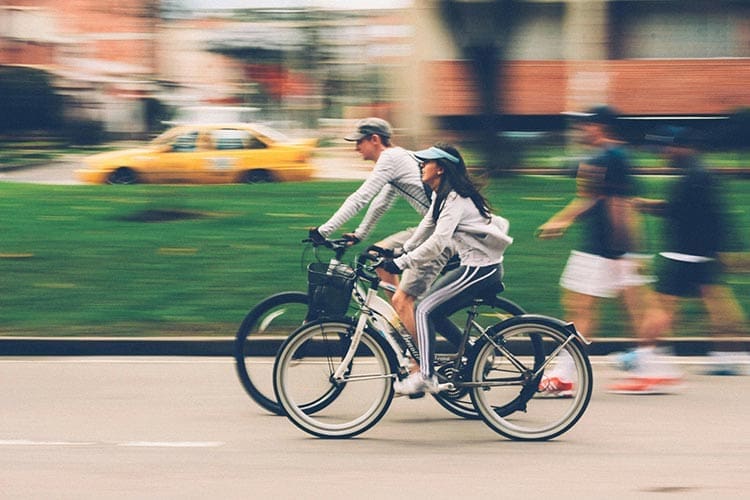Road cycling, an activity beloved by fitness enthusiasts and outdoor adventurers alike, offers a sense of freedom and exhilaration. However, amidst the joys of exploring scenic routes and pushing physical limits, cyclists face road accidents and injuries. These range from minor scrapes and bruises to severe injuries requiring medical attention. Shockingly, most of these accidents result in fatal calamities, especially for cyclists. Despite risks, cycling’s popularity grows, underscoring equipping cyclists with knowledge and resources to navigate potential hazards safely. This article delves into essential steps cyclists should take in accidents or injuries while road cycling, providing comprehensive guidance.
Assessing the Situation
When faced with an accident while road cycling, remain calm and assess thoroughly. Check yourself and others involved for injuries, examining discomfort or pain areas meticulously. Ensure safety by moving to a secure location away from oncoming traffic if possible. In addition to self-assessment, prioritize well-being and seek medical assistance when necessary, effectively address injuries and mitigate further harm. Ideally, maintaining composure facilitates clear thinking. Promptly assessing the situation and taking appropriate safety measures lays the groundwork for a structured and efficient response, ensuring all parties’ well-being.
Dealing with Injuries
When an accident happens while cycling, dealing with injuries is vital; in severe cases like broken bones or serious cuts, you must get medical care fast. Don’t put it off, as it might get worse. For mild stuff like little scrapes, cuts, and bruises, clean the area, use antiseptic cream, and put a bandage on it to keep it from getting infected. In managing sprains or strains, utilize the RICE approach: Rest, Ice, Compression, and Elevation. This helps reduce swelling and pain. In addition, watch carefully for signs of a concussion after head injuries and seek medical care if symptoms arise.
Seek Help of a Lawyer
After a bike accident involving severe injuries or disputes, seeking legal help is smart. These professionals help injured people through legal action, ensuring justice when not at fault. Plus, qualified experts provide tailored guidance on specific situations, enabling informed decisions pursuing action for justice and compensation over any damages sustained.
Documenting the Incident
Documenting a cycling accident thoroughly proves important for varied reasons like insurance claims and potential legal action. Take detailed photos from multiple angles capturing accident scene, bicycle damage, and visible injuries. Furthermore, this tangible evidence supports your case. In addition, contact information must be obtained from witnesses who saw the incident. If their accounts corroborate yours, it strengthens your position in investigations and legal proceedings. Thorough documentation ensures necessary evidence backs claims and protects interests if disputes arise from accident.
Reporting and Insurance
After cycling accidents, promptly report the incident to proper authorities, especially for accidents involving motor vehicles and significant injuries. Contacting the police creates an official accident record, invaluable for insurance claims and legal purposes. You should also notify the insurance provider promptly to initiate the claims process following their guidance to ensure fulfilling requirements, thus receiving entitled support. Seek medical attention without delay, ensuring proper injury treatment and documenting the extent of injuries incurred vital for medical purposes, potential legal proceedings related to the accident. Promptly reporting incidents helps navigate the aftermath effectively and ensures necessary support and compensation.
Advocacy and Support Resources
Besides seeking legal counsel and maintaining thorough documentation; cyclists should utilize advocacy and support from community resources. Multiple organizations are dedicated to cycle safety and rights, thus offering aid in navigating an accident aftermath. Moreover, such groups may provide legal referrals, support networks, and educational resources, empowering cyclists and protecting their interests. When connected with advocacy groups, the injured cyclists access information and relevant support in navigating claims, proceedings, and challenges adeptly. Furthermore, partaking in advocacy efforts contributes to broader initiatives improving cycling infrastructure, promoting safety measures, and raising road awareness of cyclist rights.
Holistic Recovery
After a bike crash, these injured cyclists deal with physical injuries and psychological distress. Many cyclists involved in accidents have trauma symptoms like anxiety and PTSD. As you all know, such an impact can harm cyclists, their friends, and their families. For this reason, gaining emotional and psychological support and rehabilitation are key. Therapists help cyclists process emotions and manage anxiety from the event. In addition, rehab programs with physical and occupational therapy restore mobility and function if the accident involves rendering the cyclist handicapped. Moreover, they may involve customized exercises to aid in recovery. It’s only through this way that these people build resilience and regain control after an accident.
Preventive Measures for Road Cycling Safety
Sometimes accidents are inevitable, but cyclists proactively cut risks by adopting preventative steps. Safety education has a crucial function as training courses equip cyclists with skills and awareness to travel roads safely, effectively handling potential dangers. Investing in high-visibility garments, illumination, and reflective gear heightens cyclists’ conspicuousness, decreasing accident probability, particularly under low visibility conditions like darkness or inclement weather.
Additionally, informing oneself about local traffic regulations related to cyclists’ entitlements and duties empowers them to advocate for safer roadways and hold accountable those culpable for incidents. Embracing preventative actions, cyclists actively contribute toward crafting a safer environment for themselves and others on roads, thereby diminishing accident and injury occurrence.
Safety Education for Cyclists
Cyclist safety education is paramount for ensuring their security on roadways. Through participation in base education initiatives and training programs, cyclists obtain vital skills and cognizance to safely navigate traffic while effectively responding to potential perils. These courses cover myriad subjects like traffic laws, road etiquette, and defensive cycling techniques, equipping cyclists with the knowledge to make informed decisions. It also advances the safety education of each cyclist for their own security and enhances the educative safety of cyclists in general. The culture of respect and cooperation is also injected into responsible cycling education for all road users so that the environment is safe.
Cycling is thrilling yet poses a lot of risks, from accidents to injuries to sometimes loss of life in severe cases. However, knowledge and proactive steps help cyclists minimize dangers and stay safe. Prioritize safety and always address injuries promptly, regardless of how minor they may seem. In addition, follow legal procedures to follow up on compensation if you were not at fault. Seek support and guidance to overcome challenges confidently to enjoy cycling passion with assurance.
No products found.

















